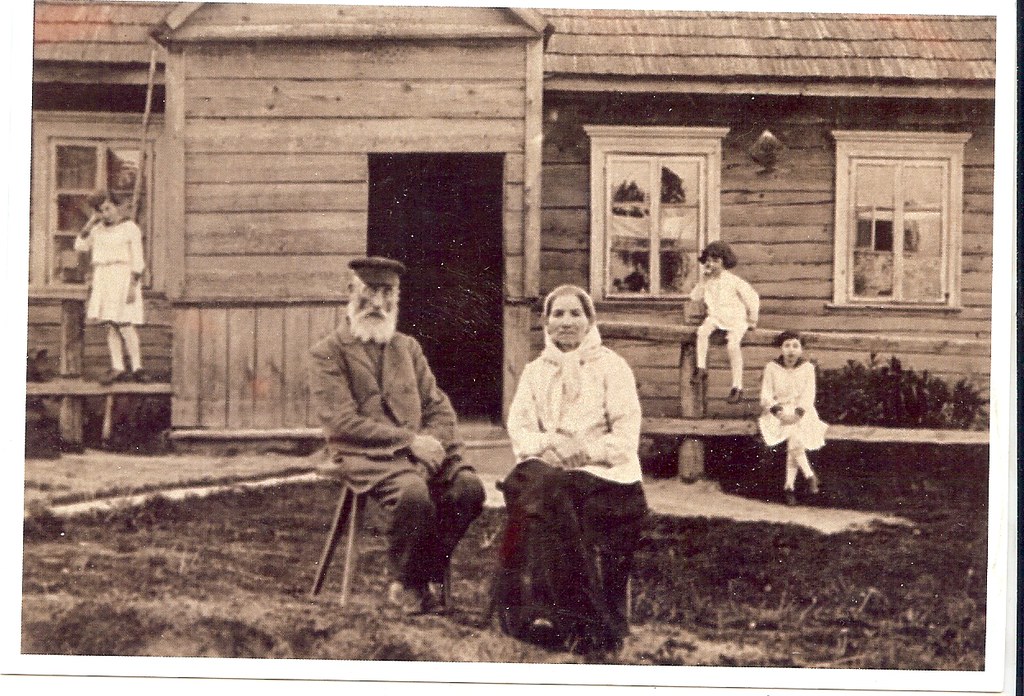In 2007, I traveled with my family to Lithuania looking for my grandfather’s childhood home. My grandfather left Visukitvor, Lithuania in 1906 at the age of sixteen to travel to America. He arrived at Ellis Island alone, without money, unable to speak a word of English. Life was hard for him in New York. He worked sixteen hour days cutting fabric for dresses. If he’d stayed in Lithuania, he would’ve faced religious persecution and been drafted into the army–a death sentence for many Jewish boys.
Prior to the trip I’d researched the area and found out the location of the shtetl where my family lived. I carried with me a photo from 1927 of my grandfather and his family. Visukitvor, a village of about a thousand people, is thirty miles outside of Vilnius, the capitol of Lithuania. We hired Rosa, a local guide, to help us find my grandfather’s home. It was a hot July day when Rosa walked the streets of Visukitvor and showed the photo to elderly townspeople. Several people said they were too young to remember that time. One woman told us there was only one remaining resident of their village who was alive in 1927.
The old woman, Bertha, lived at the end of an alley in nice home with wooden doors and white geraniums in window boxes. She gazed at the photo of my grandfather’s boyhood home and smiled. Yes, she knew the family who lived in that home. It was more than one hundred years after my grandfather left the little village and I couldn’t believe Bertha knew him and his family. She told us the house in the picture had been burned down in 1944 when German soldiers set many Jewish homes on fire. She took us to the place where the home had stood.
Bertha remembered my great-grandfather and said that he had been a friend of her father's, that my great-grandfather had bought supplies for his general store from her father. She was too infirm to walk with us, but gave us directions to the Jewish cemetery on the outskirts of town. The cemetery was overgrown with weeds and shrubs. It took time to clear the headstones, but when we did, we found graves of our ancestors. It meant a lot to me to show my wife and three kids our family history. I hope understanding family history makes my kids feel they are part of a continuum that stretches across centuries.
My grandfather died when he was ninety-five. From 1906 to 1927, his ages of 16-37, he worked hard and built a successful business. When he went to visit his family in 1927 and took the photo of his family, they had little money, rags for clothes and scraps of food to eat. His goal was to get visas for his parents and siblings so they could join him in America. He begged officials and even tried to bribe them, but it was impossible to get visas for his family.
Most of his family perished in the Holocaust. His inability to save them caused him lifelong pain. But even with this tremendous internal sorrow, he was a kind and generous man, who worked hard and provided for his family. Each of his children attended college and lived successful lives.
When I spoke to him of having a tough time with something, he would often say: You must strive to do better and then strive some more.
It’s all we can do, any of us.

